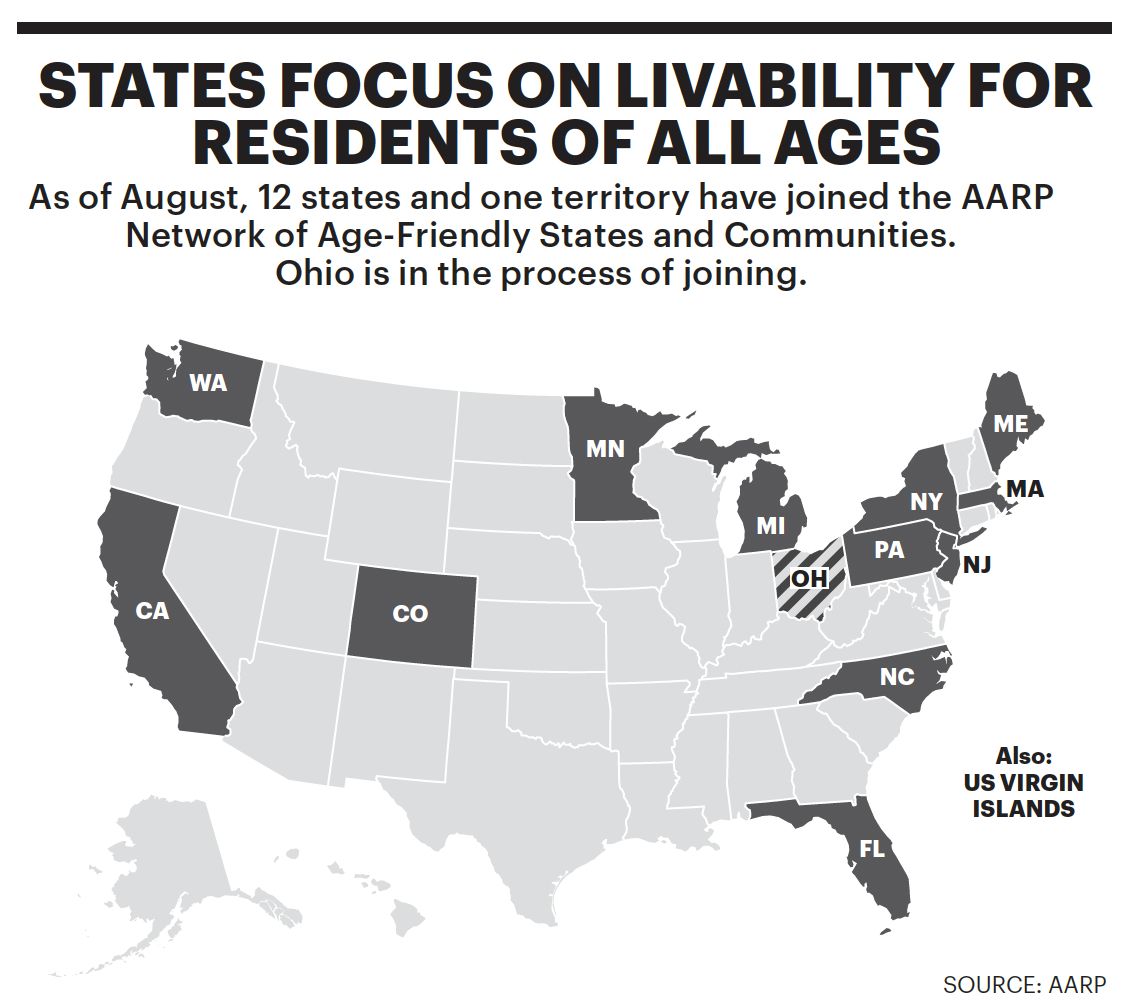AARP Hearing Center

For Joyce and Joseph Menefee, 67 and 70, navigating their Cleveland home of 23 years became a challenge. The shower required stepping into a bathtub, which was difficult with her arthritis and his sciatica and scoliosis. The kitchen floor sloped. The roof needed to be replaced.
Retired and living on Social Security, the couple didn’t have the money to fix the problems. But with strong ties to the neighborhood and nearby grandchildren and great grandchildren — some of whom they help care for — moving wasn’t an option either.
Then they learned about the city’s Age-Friendly Home Investment Program, which helps residents 60 and older and those with disabilities address home maintenance and repair needs. Last year, the program paid for a walk-in shower and repairs to the kitchen subfloor, allowing the couple to safely remain in their home.
“It’s been a godsend,” Joyce Menefee says. “We can go in [the shower] and not have to worry about if one of us can’t lift a leg.”
The program is one example of local initiatives that have taken root in the 36 cities and counties across Ohio that have joined the AARP Network of Age-Friendly States and Communities. Now, the entire state is planning to join the network. As of August, 12 states and one territory were members.
Gov. Mike DeWine (R) has thrown his support behind the initiative, noting that he wants people to think of Ohio as “the best place to grow old in the nation.”
“We want for older Ohioans what we want for all Ohioans — for people to live up to their full potential,” DeWine says.
Ohio already has policies in place to support its aging population, from a newly launched nursing home navigator tool, to free access to state parks, to wage increases for home-care workers.
Ensuring adequate pay for home-care workers is important to help not just older adults but also people with disabilities live independently at home, DeWine notes. “If the pay doesn’t keep up ... you can’t find the people to help them,” he says.
DeWine adds that he envisions an Ohio where older adults are not only cared for but feel valued and relevant — where they can work if they want to or share life experiences with young people in schools. “Just because someone is 80 or 90 doesn’t mean that they don’t want to contribute in some way,” he says.
BENEFITING ALL RESIDENTS
AARP’s age-friendly network encourages local and state governments and engaged residents to work toward changes that make it easier for residents to live well at all ages. Members commit to a process to assess their communities and develop an action plan to address a range of issues, from safe sidewalks and affordable housing, to accessible public transit and social inclusion.

Such efforts don’t just benefit older residents, says Jenny Carlson, state director of AARP Ohio and former assistant director at the Ohio Department of Aging. An intersection with a wider crosswalk and traffic lights timed for a 70-year-old to safely cross is also safer for a parent with a stroller, someone walking their pet or a student biking to an after-school job, Carlson notes.
In Akron, Harvey Sterns, a gerontologist and retired University of Akron professor, points to the city’s age-friendly business initiative as one of its biggest wins.
Volunteers working with the Better Business Bureau have evaluated nearly 40 local companies for things such as easy entry, seating for older customers and access to restrooms, Sterns says. The first organization to earn the designation was the Akron Zoo, where evaluators looked at factors such as readability of exhibit displays, availability of seating and ease of navigating long distances.
HELPING RESIDENTS AGE IN PLACE
The need for such initiatives is only growing. Across the U.S., more than 11,000 people turn 65 every day. By 2040, one in four Ohioans will be age 60 or older, as the state’s older adult population grows to nearly 3 million, state data shows.
“If it’s roads and bridges, housing and public transportation, you should always think about how individuals are aging and wanting to age in place,” Carlson says.
In Cleveland, city leaders recognized that aging housing stock posed challenges for older adults who wanted to stay in their homes as they aged. The city’s Age-Friendly Home Investment Program has funded in-home improvements, such as bathroom modifications and 950 new roofs.
Mary McNamara, Cleveland’s director of aging, says age-friendly services and programs are a way for the city to preserve economic vitality and community character that is lost when retirees depart for warm-weather states like Arizona and Florida.
“We want them to remain in our community, and we have to work hard to do that,” she says.
Stacey Shepard, a California-based journalist, writes about health care, the environment and other issues.
MORE ON LIVABILITY































































